The Black Rock City Honoraria Program funds artists from around the globe to create innovative participatory art projects — big and small — that rise on the city’s open playa. These grants from Burning Man Project support returning and new artists alike, they catalyze cross-cultural understanding, and help communities nurture artists and community leaders. These capacities may emerge through the process of creating art in Black Rock City, but their impact extends well beyond the dust to advance a more creative and connected world.
Funded by the nonprofit Burning Man Project, the Black Rock City Honoraria Program helps artists from all traditions and walks of life tell their stories through collaborative projects. When you contribute to the nonprofit through donations or higher-priced tickets, you’re directly funding these grants, bringing art to the playa and more connective creativity to the world. The Honoraria grants are designed to cover a portion of the artists’ costs, but projects require additional financial and logistical support from the community. We’ll be publishing the 2025 Art Listings soon — take a minute to browse these, find an installation that speaks to you, and get involved!
Cultivating Cross-cultural Storytelling and Understanding
Burning Man celebrates cultural cross-pollination, and encourages participants to share and explore one anothers’ traditions. Through Honoraria grants, artists are supported in bringing cultural stories to life in ways that are participatory and experiential. These immersive experiences open new perspectives and serve as portals to help people connect and understand one another.
Black Rock City 2025 Honoraria artists Thomas Dambo and Anwane Lee are each bringing large-scale interactive works that utilize ancient stories from their respective cultures. Thomas’ giant troll, Rose, is making the journey from Denmark with a reminder of the importance of protecting the natural world, while Chicago-Based Antwane Lee is invoking a cosmic story that shines a light on the power of ancient African spiritual technologies.
As a youngster, Dambo spent time working in a warehouse in Denmark, where he witnessed a stunning volume of pallets and crates being discarded every day. He began to imagine all the things he could create with this scrap wood. And he had an epiphany.
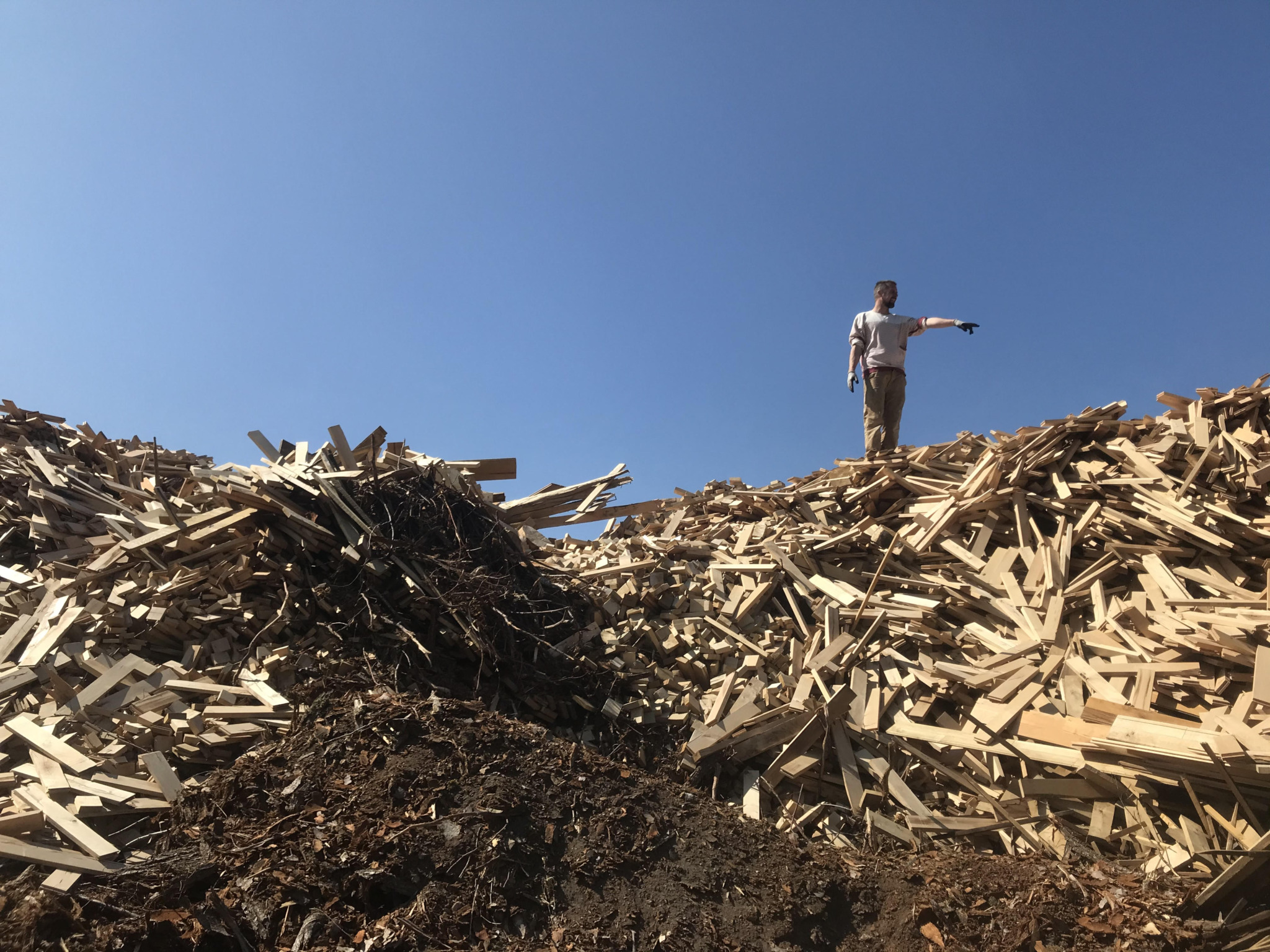
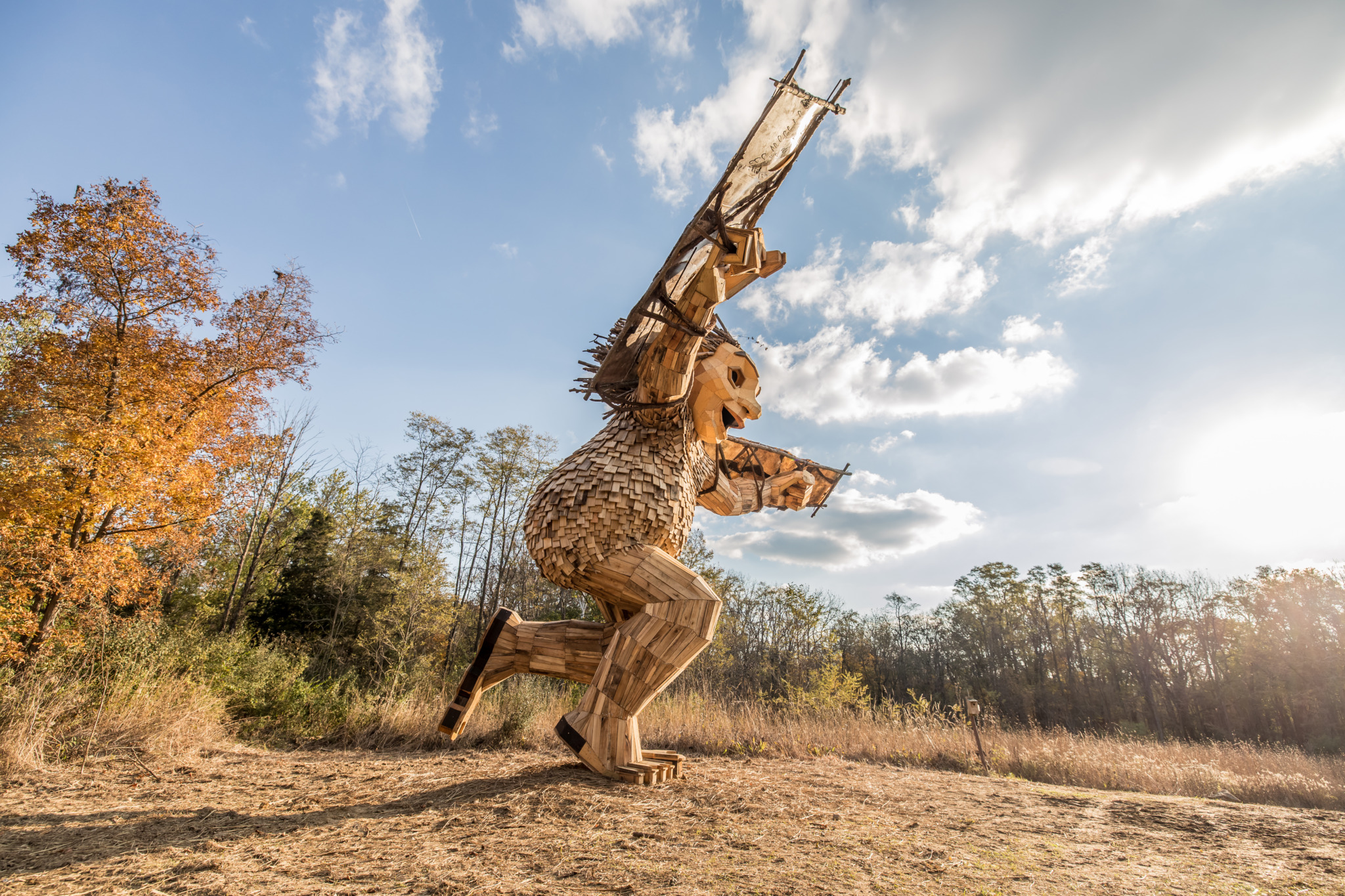
“Those piles of wood embodied a forest that had grown all over the world,” Thomas told us. He pictured a global legion of trolls, crafted from scrap wood; each troll stood as a protector of the natural world. Trolls have an ancient role in northern European cultures. “They have their foothold in what was before,” Thomas explained. “The trolls were always creatures of nature… ”
Since then, Thomas has transformed discarded materials into 156 trolls that roam across 17 countries. “The stories that I tell with trolls, they’re the unspoken voice of nature and plants. What would animals and plants say if we could understand? The humans are the ones who have some black magic power that enables them to control and change everything… I use my trolls to show us a mirror of who we are as humans.”
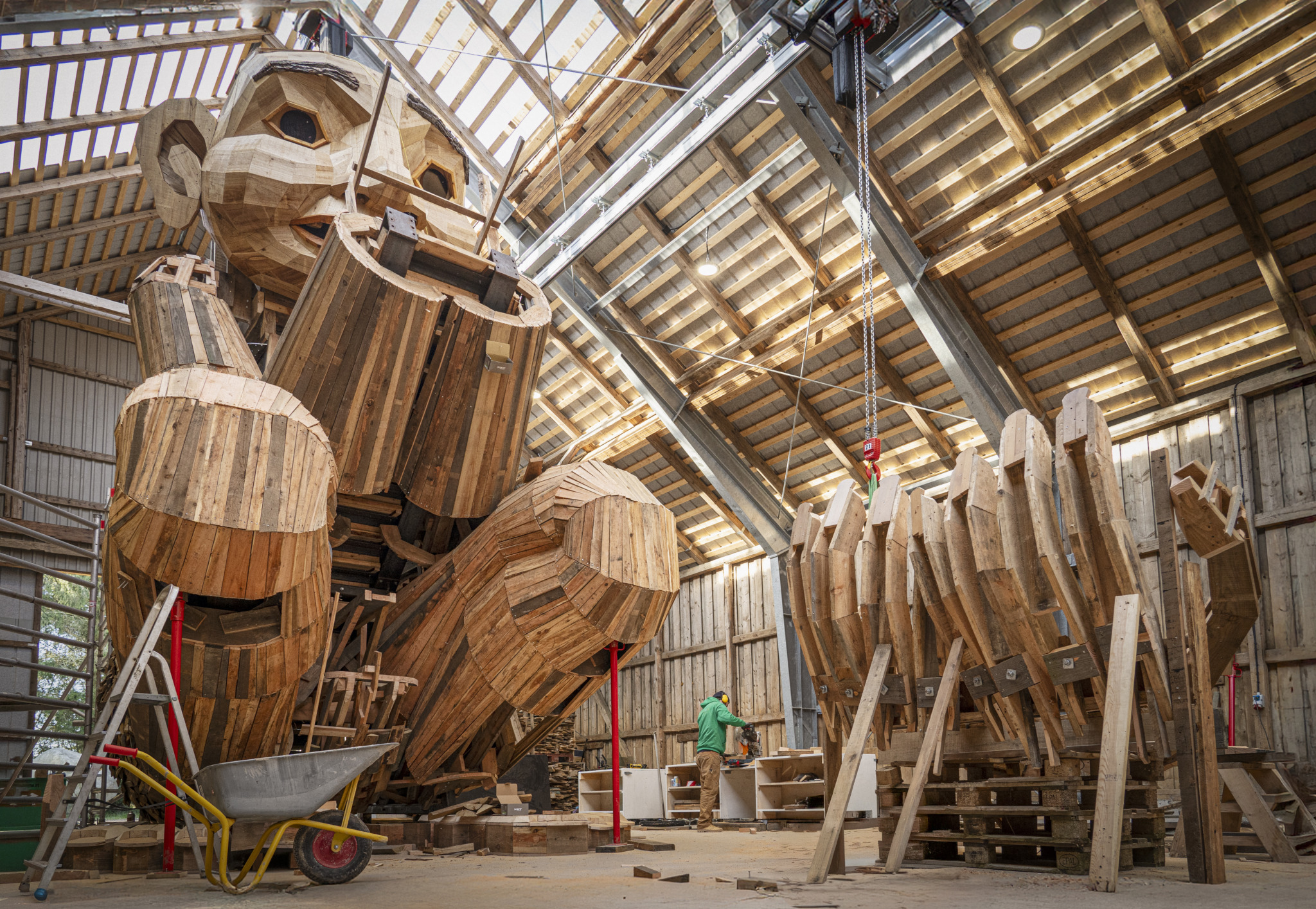
Rose is the newest addition to Thomas’ troll family, currently being created on his farm in Denmark. In May, she will travel across the ocean to Black Rock City as “Rose Wonders,” Thomas’ 2025 Honoraria installation. On playa, Rose is trying to understand who we humans are, and why we behave like we do. Next on her journey, Rose will be installed in a botanical garden — a fitting home for an ancient forest creature.
Browse Thomas Dambo’s global troll map and learn more about his work on his website.
From forest creatures to a faraway solar system, Chicago artist and architect Antwane Lee is bringing a large-scale work that merges contemporary technology with ancient African traditional beliefs about the cosmos. ‘’’Pillar of Po Tolo’ is based on the Dogon tribe from Mali, their cosmology and spiritual beliefs,” Antwane explained. “The Dogon people have a belief system that the founders of civilization on Earth came from the Sirius star system… They had this concept that Sirius was a binary star long before European astronomers, with the aid of telescopes, confirmed this.”
In his work, Antwane is leveraging 21st century technology to immerse participants in an ancient belief system that is still very much alive among the Dogon people. As participants approach the pillar — the center of the installation — they move through a portal to activate music and lights, and engage with a console to influence these effects. The pillar is adorned with handprints and ancient symbols such as West African spirals of creation.
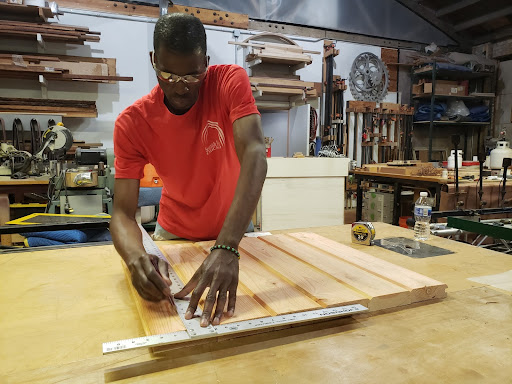
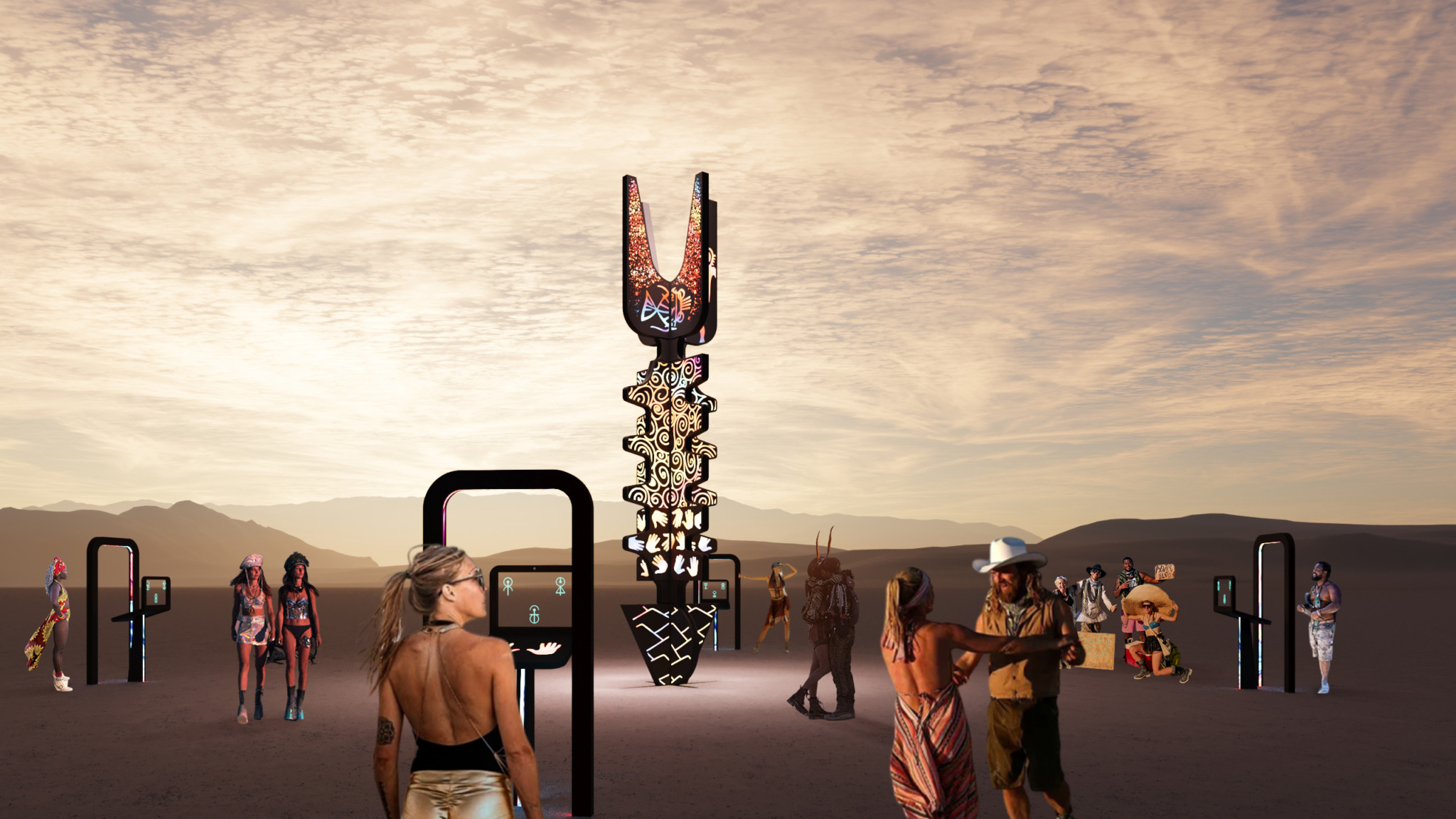
“From a spiritual standpoint, different cultures around the world believe that when they go to shrines, they’re going to another space, another dimension,” Antwane added. “I wanted this installation to be a way of using [a shrine] in a modern sense… to activate it at a console, because that’s what we’re so used to.”
Via interactive encounters with the “Pillar of Po Tolo,” Antwane hopes participants will broaden their concept of technology. “African spiritual science is a form of technology. It may not be in terms of zeros and ones or quantum computers, but it is a form of technology.”
After Black Rock City 2025, Antwane hopes “Pillar of Po Tolo” can travel to other cities and events and continue opening minds to African spiritual technology and cosmology of the Dogon people.
Follow Antwane on Instagram to learn more about the piece and support its journey to Black Rock City.
Empowering First-time Playa Artists to Bring their Visions to Life
When first-time Black Rock City artists receive an Honoraria grant to bring their art to the playa, they accept an experiential invitation to stretch their creative and logistical wings. Helping artists and collectives bring works of art to playa for the first time cultivates connections and new forms of creative expression that ripple well beyond Burning Man.
“Simple art has its place out there too. People are used to seeing in the press these huge sculptures and these huge pieces that you need a semi-truck to bring in,” noted first-time playa artist Lauren Randolph, co-creator of 2025 Honoraria piece “Tim’s Bench.” She’s one of several Honoraria artists building a desert installation to Black Rock City for the first time this year.
Also embarking on their first Honoraria adventure, Hope Antrim and Nate Andersen are in the midst of kicking off their art build. “PATCHES” was born from a joke about a crone who magically appears on playa to mend damaged fake fur, torn spandex, and faulty playa gear. Over three years, Hope and Nate came up with endless yarns about Patches’ handiwork. Then they devised her little house, an oasis of helpful tools and supportive skills.
When Hope and Nate received an Honoraria grant to build “PATCHES” in Black Rock City 2025, the fairytale became very real. Patches will inhabit a whimsical playa cottage complete with sewing machine and other helpful tools. Inside, skilled and generous humans will sew, repair gear and share their gifts.

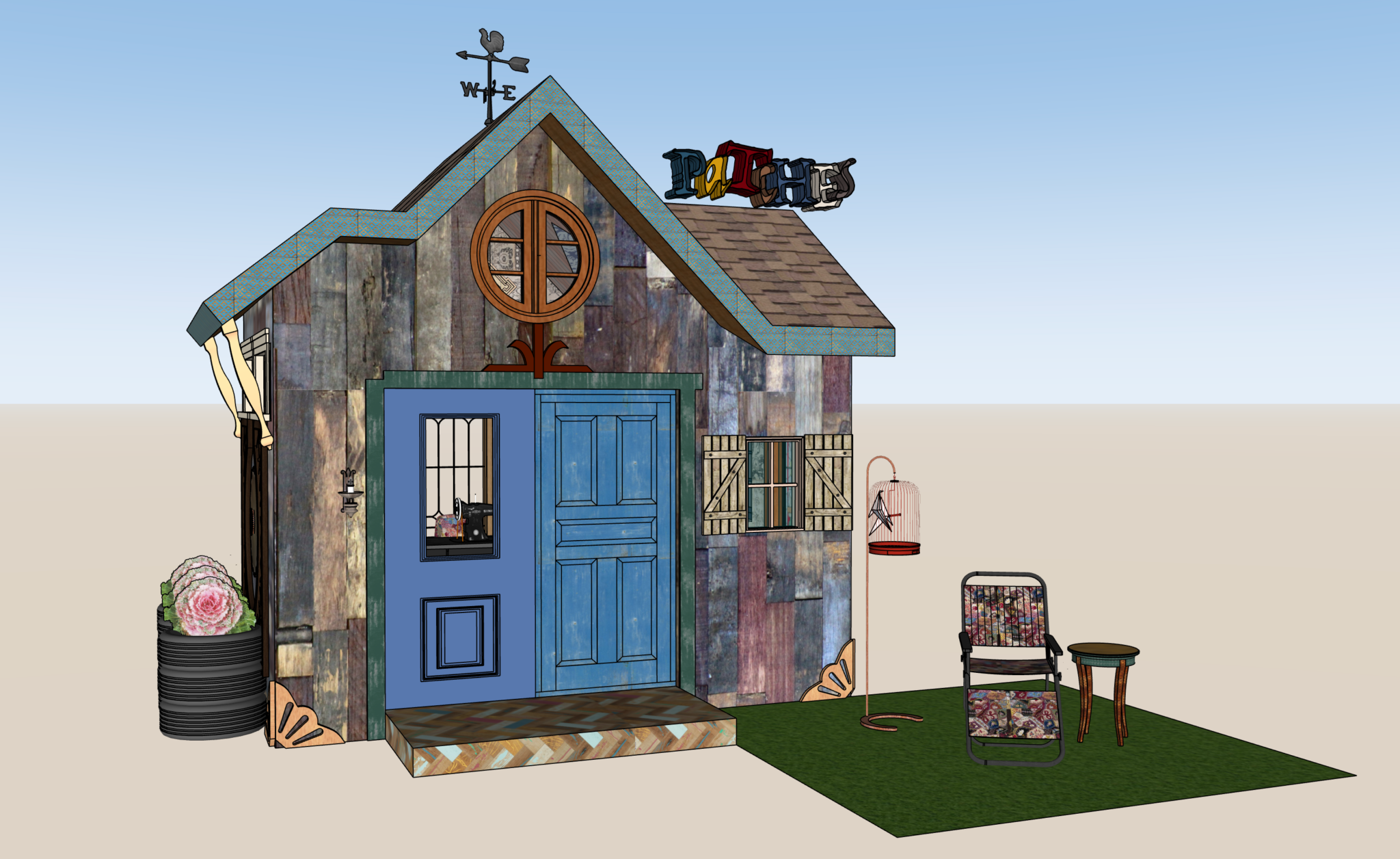
“For some of our artists who are working on this, myself included, we’ve been putting a career in front of our artwork,” Hope told us. “To really get to share a piece of art with the community and just heal that part of ourselves and send love out that way would be really special.”
Hope and Nate quickly found they were cultivating a community of friends, family and artists to help out. Patches was working her magic. After Black Rock City, Patches’ house will be relocated to a small town near Joshua Tree, California, to house a vulnerable family member who needs a permanent place to live.
Learn about “PATCHES” and explore her adorable cottage on the artists’ website.
Sisters Caitlin and Lauren Randolph always came to Black Rock City with their dad, Tim Green. Starting when they were teenagers, Tim gave them Burning Man gear and a ticket every year at Christmas. Together, they run Our House Camp with family and friends. Every year they organize Color Day, which invites participants to dress in a single color and pose together in a giant rainbow photo.
This year, Caitlin and Lauren became Black Rock City artists. Their Honoraria piece, “Tim’s Bench” honors the memory of their dad. “Our dad’s only wish upon passing was to have a bench instead of a gravestone because he wanted to give people a place to have a nice sit and enjoy the view… Burning Man was so important to him, to us, to our family, to his lifestyle. It just felt appropriate to work on bringing benches to Burning Man first.”

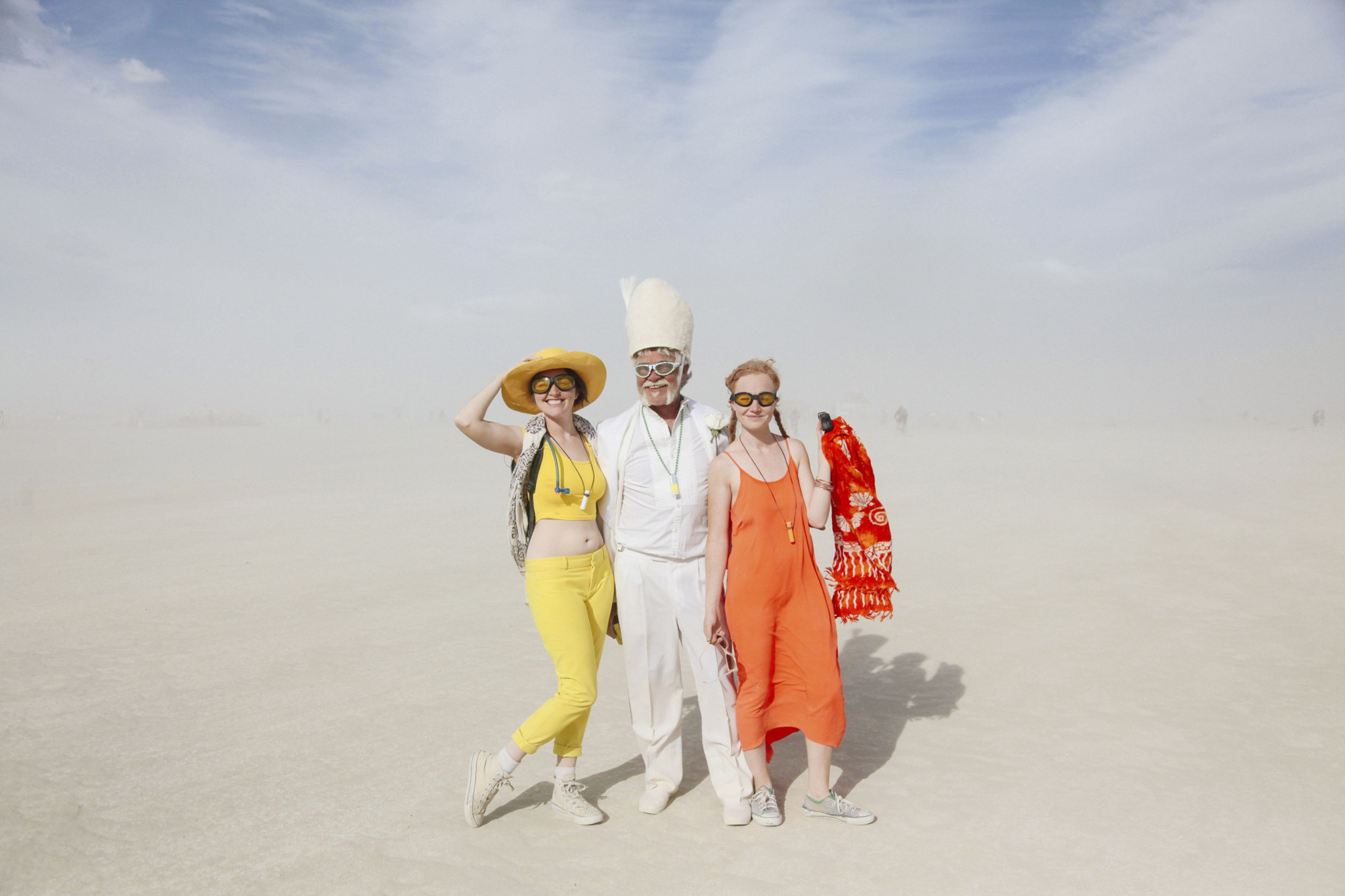
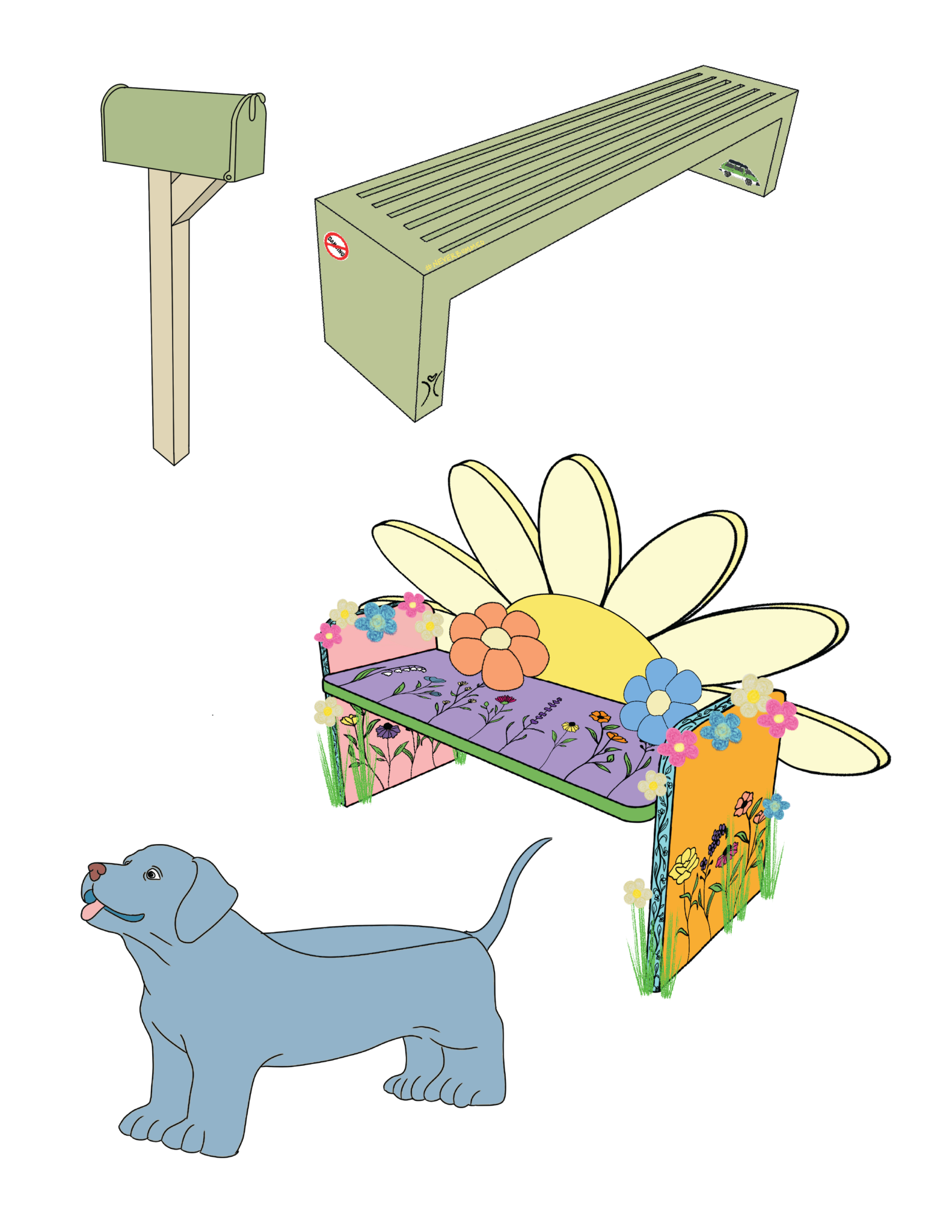
While Caitlin and Lauren work in creative industries, they are new to the adventure of building art in the dust. “It’s something both of us have talked about every year. Going to Burning Man for decades makes you interested in installation art,” Caitlin told us. “Working in any kind of construction or building is definitely a new thing for me and I’m excited,” Lauren added.
“Tim’s Bench” will in fact be three adorable benches, situated in the ideal place to rest and contemplate the cacophony of Black Rock City. It is a perfect tribute to their dad. Lauren explained: “He started bringing a little fold-up chair along to festivals because he specifically said, ‘There are never enough fucking places to sit at these things.’”
“Some of the best art out there is the stuff that’s simple and smart and helpful…” observed Caitlin. “That was something really important to us: having a place for people to rest… the walk home is always a lot longer than you think.”
Drop by the “Tim’s Bench” website to learn more about the project.
Art as a Path to Learning Skills and Nurturing Creative Community
Burning Man is a sandbox for collaborative teaching and learning, one that builds artists’ skills and capacity to take on new challenges in Black Rock City and beyond. When you encounter large-scale interactive art on the playa, it’s easy to assume it’s built by traditional metalworkers and fabricators. In reality, many installations emerge from community-run spaces that invite anyone to step in and learn the skills needed to be part of a big art crew.
For 25 years, the Flaming Lotus Girls have fabricated kinetic fire art for Black Rock City and beyond. The collective encourages femme and queer creators, but welcomes all. Their open door philosophy invites people with little or no experience, and has succeeded in nurturing multiple generations of creators who spread their wings and become artists and teachers in their own right.
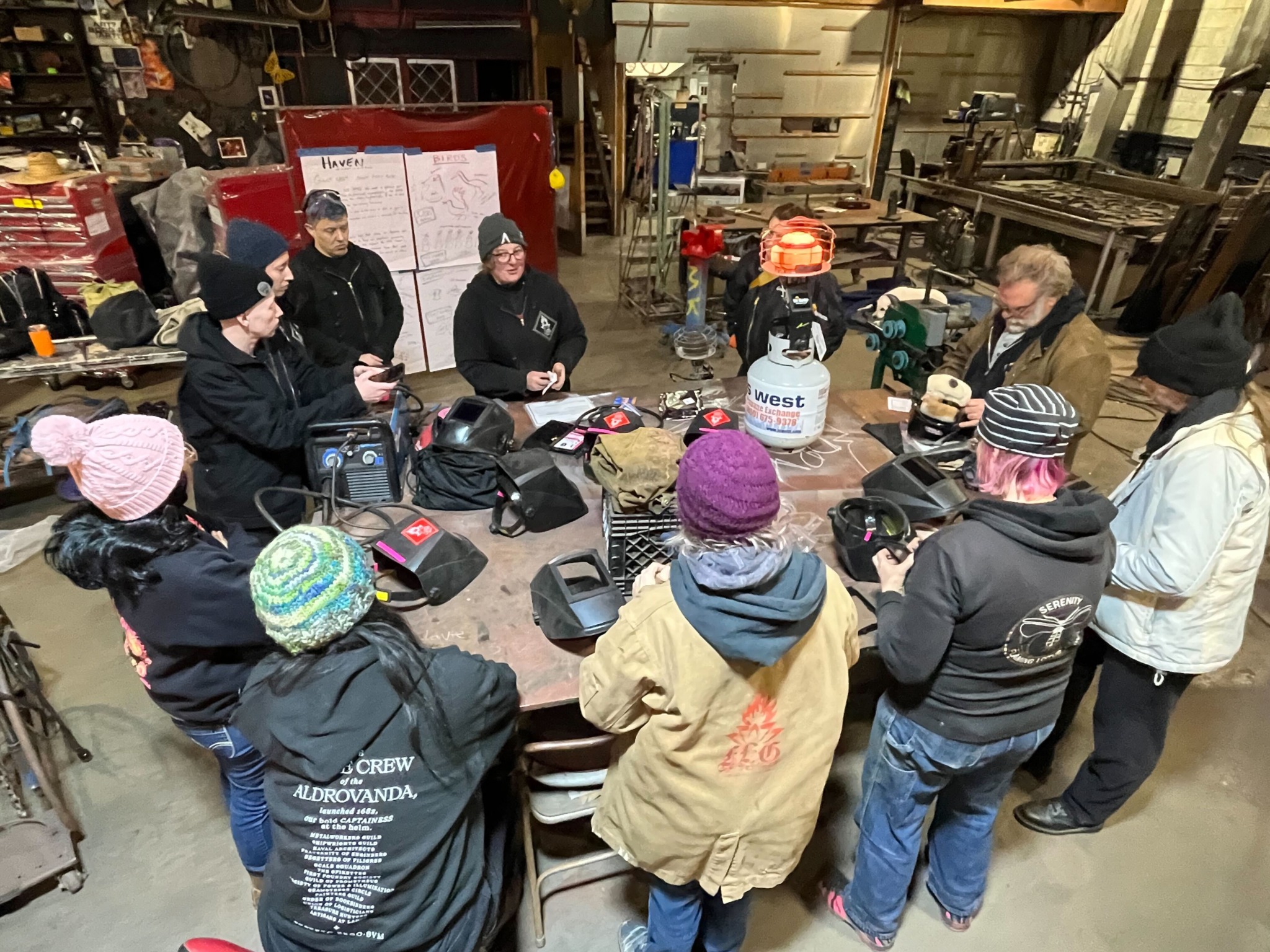
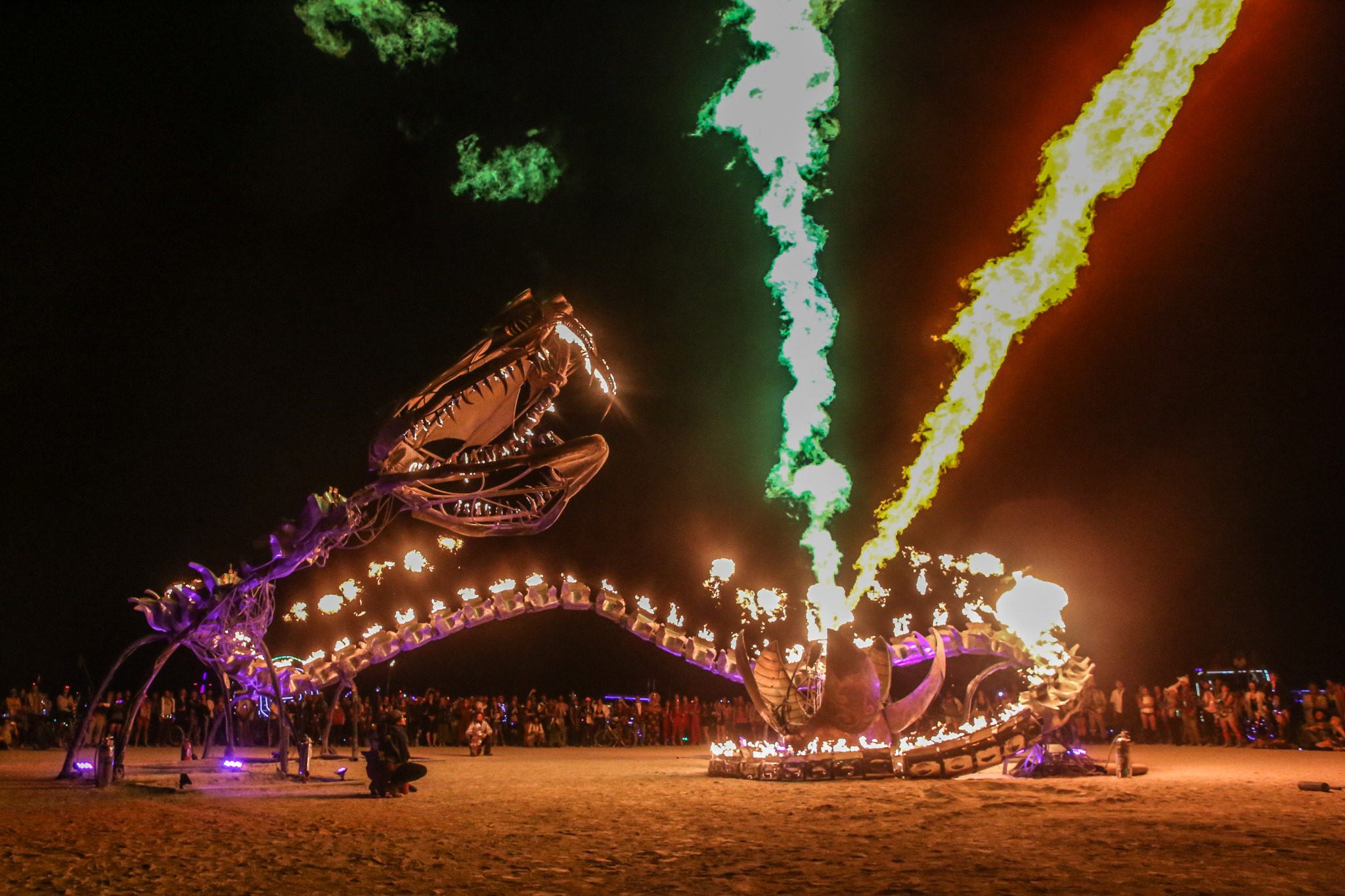
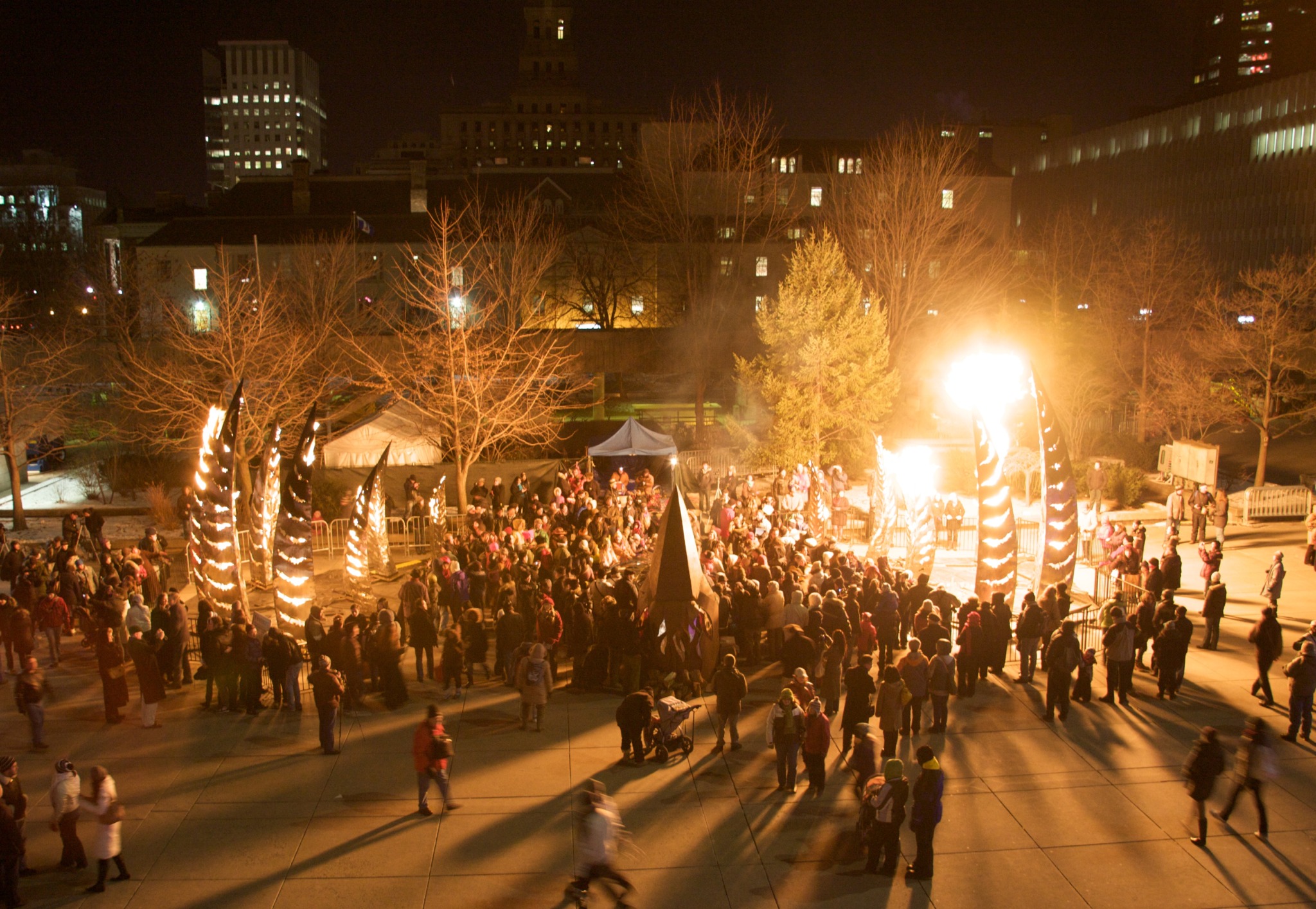
“One of the primary design considerations for most projects is making space for people to be in Flaming Lotus Girls. We are about community; the art is almost a byproduct,” explained Margaret Long, a long-time member of the collective.
Anne Pauley joined Flaming Lotus Girls in 2019 when the crew was already deep in building “Serenity” for Black Rock City. She brought project management skills, and soon learned metalwork and fundraising. “We have people designated in the group to intake new people and find tasks that will fit their existing skill set or don’t require existing skills. There’s always work to be done, so we put a lot of thought and consideration into making sure that somebody can come in not knowing anybody… and just meet them where they’re at.”
Fast forward to 2025, Anne is part of the team building “Haven,” Flaming Lotus Girls’ 19th Honoraria installation. The piece is a nest, overseen by a host of different birds protecting the magical eggs laid within. “Haven” will invite dusty participants to come into the nest to rest, gather… and push buttons that make the birds spout fire.
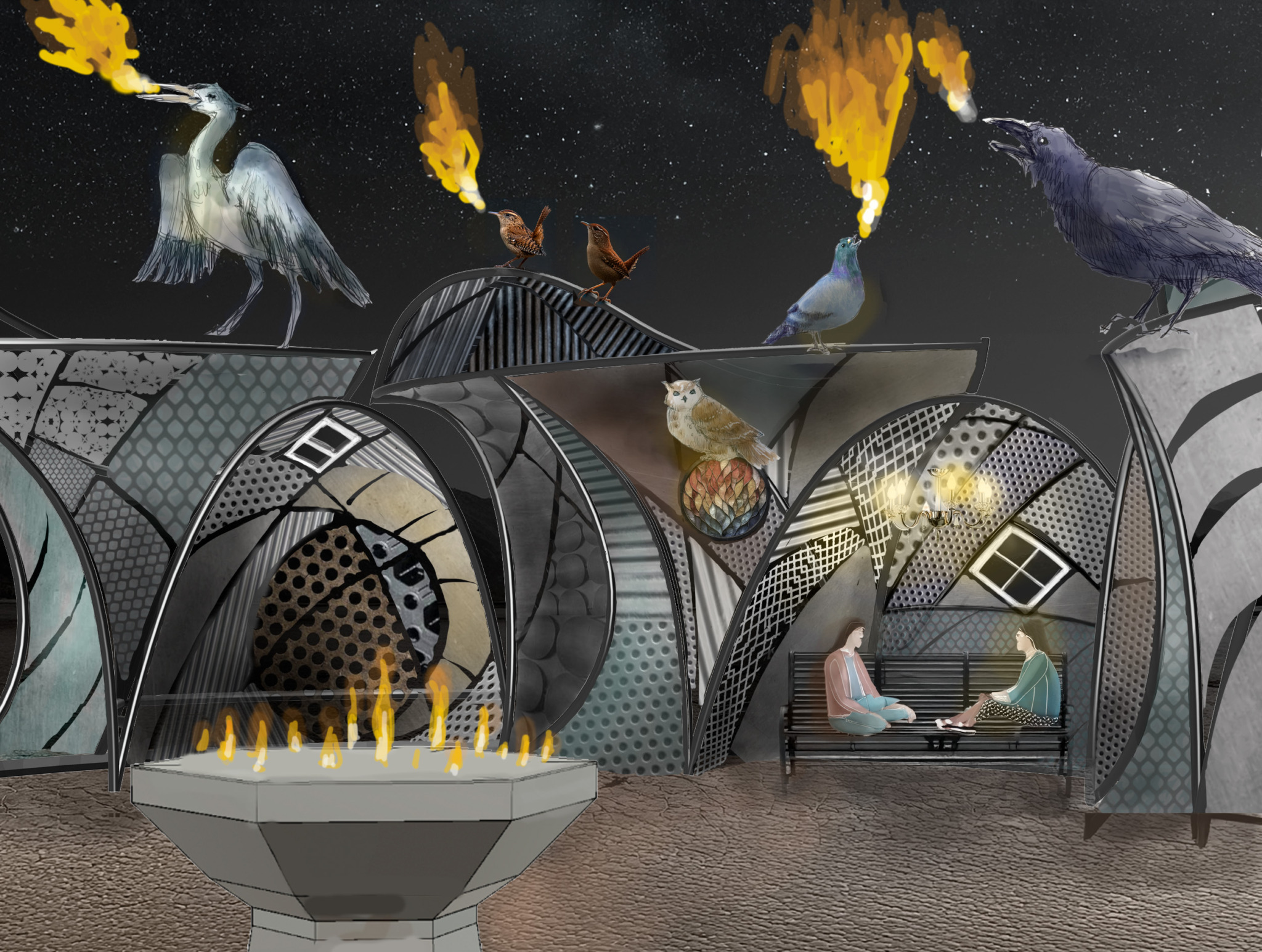
“‘Haven’ is us…” Margaret told us. “We’re a bunch of weird birds getting together, being awesome and fabulous, and creating this space that is beautiful and joyful, that gives us all something to work together towards, that gives us opportunities… to find new skills and be creative.” Flaming Lotus Girls’ work has traveled far and wide, to events and urban spaces where it continues to evoke awe and inspire people to learn industrial arts and build beautiful things.
Visit the Flaming Lotus Girls website to follow them on social media and join their newsletter; both will announce upcoming fundraisers and opportunities to get involved.
The World-changing Power of Community-built Participatory Art
The participatory art of Black Rock City evokes awe, empathy and connection — emotions that bring people together to imagine possibilities well beyond themselves. This year, 76 Honoraria-funded works of art will rise on the playa. These grants support first-time and experienced artists alike, emboldening them to share cultural stories, cultivate community, and learn skills that create an impact beyond the desert. Learn more about 2025 Honoraria art in this Journal post!
Cover image of Danish artist Thomas Dambo in his studio, 2025 (Photo courtesy of Thomas Dambo)

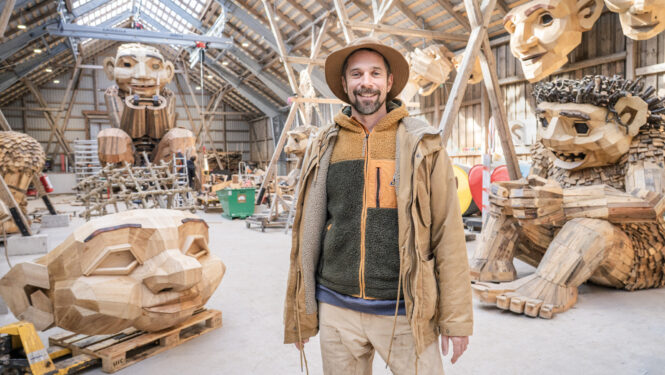
I saw one of Thomas Danbo’s trolls last year on Bainbridge Island (Pia Peacekeeper). He has another one over on Vashon that I haven’t seen yet. Really looking forward to having one of his trolls on playa.
Report comment
This article is a real gem—thank you for sharing!
Report comment
‧₊˚❀༉‧₊˚.
Report comment
Im looking forward to meet Rose (thomas dambo troll) at Burning Man!! I believe his art and his values is a perfect match with Burning Man project!!! Congratulations for all of you !!!
Report comment
Comments are closed.